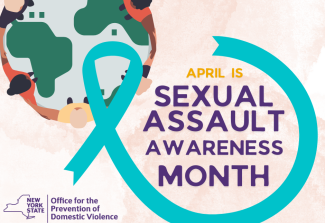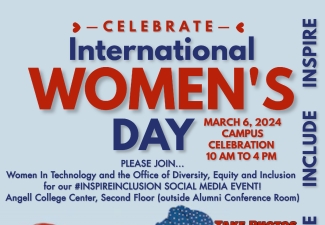Communicating in the New Age: Communications Facilities Undergo Major Upgrades | SUNY Plattsburgh
"With this major renovation, the technology and space now equals the caliber of students who are devoting their time and energy to building their careers here."
After dealing with outdated analog equipment for years, renovation and relocation, communication studies students began the fall 2015 semester in facilities so new, they didn’t recognize the place.
Yokum Communications Hall, home to the communication studies program, underwent a $3.3 million renovation project lthat included demolition, abatement and reconstruction of the old space on the ground floor of the building, which encompasses the television and audio studios, according to Rick Larche, capital project manager.
And for those students familiar with the old digs, the new space was a joy to behold.
“A year ago, I was in the old studio, and everything in it was from the ’80s,” said Chris Delano, a senior from Pawling, N.Y. “Now, it’s all brand new and up to date. It’s probably better than what they have out there in the field.”
John Linnenbach, a senior from Baldwinsville, N.Y., concurred.
“I worked at PBS over the summer, and this is so much newer than what they had,” he said. “It’s cleaner and brighter — so much better.”
Updated Equipment, Look
The update includes new equipment, television and sound studios, editing labs and a bright, updated look.
“From the cosmetic changes in the floors and walls to the new editing suites and studios, the area has been completely renovated and updated,” said Tim Clukey, associate professor of communications.
Yes, the facility got a facelift, but the most important aspect was upgrading equipment to bring the facilities to current, professional studio standards, Larche said.
While not all the work was 100 percent completed for the start of the semester, the facilities were ready to accept students on the first day of classes, said Jon Chew, television studios manager.
In Competition with Top Programs
“This puts us in competition with some of the top programs in New York state and the Northeast because we now offer students cutting-edge technology,” said Dr. Shakuntala Rao, chair and professor of communications. “We may have been delayed over the years in making the transition, but now we’re ahead in many ways.”
Rao said that even with outdated analog equipment, “We always had very good facilities. Now, with digital technology, it helps faculty pedagogically to show students what’s happening in the industry. Our mission has always been the professional preparation of our students. That’s what draws students here, and now, we have the technology to move the program forward.”
Rao said the students “have really been loving the changes. They love being in this environment.”
Two new control rooms offer students the chance to direct the action in either the Albert R. Montanaro Television Jr. Studio, or in studio B, Chew said. Americans with Disabilities Act issues were addressed in the control booths, bringing all equipment to the same level.
On the audio side, Clukey said the previous editing rooms — two or three larger rooms with computers that the students had to use in close proximity — have been transformed into 13 separate editing suites. A unique automatic dialogue recording studio allows students to dub over dialogue. The ADR and one of the editing suites is ADA compliant, Clukey said.
‘The Think Tank’ Lounge
In addition to the editing suites, a bank of hookups along one wall allows students doing editing on their laptops to tie into the system. A corner of the facility, dubbed “The Think Tank,” features lounge furniture and data ports so students can gather to brainstorm and share ideas outside the classroom.
The new audio lab is more than two-thirds bigger than the old space, Clukey said. Whereas the old facility housed two audio-capture booths, the new facility boasts four. One of the booths is for students training in general audio courses as well as those working audio in television, he said. Audio lab 2 is for advanced audio students involved in music recording.
“When you give students good space, you value them. You’re telling them that they are valued, and they matter. This generation of students here knows the before and after; the new students coming in will only know this. The challenge will be to keep up the facility, to always stay up to date and not get outdated,” Rao said.
While technology does not replace pedagogy, it does support and enhance it. “Pedagogically, we’ve always been strong," Rao said.
News

SUNY Recognizes Two Plattsburgh Seniors for Excellence in Academics, Leadership

Sexual Assault Awareness Month Events Planned Throughout April
‘Day of Visibility’ Recognizes, Highlights Members of Transgender Community
SBE Teams with CVPH Medical Center to Train Management Personnel
